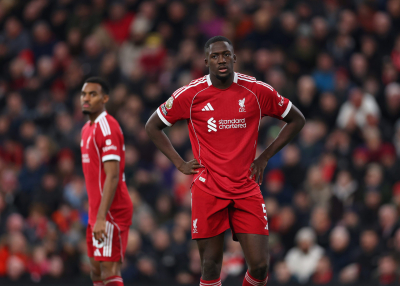Football News: Tactics: Part 2 - The Low Block
Image from: freelargeimages.com
Tactics - Part 2 - The Low Block
The deep-lying defence, parking the bus or whatever else you want call it, the tactic often referred to as a low block is all about denying opponents space in the most dangerous area - your penalty box. Some managers see it as anti-football, some as a tactic to call upon for specific games, while others, such as Roy Hodgson, use it as their go-to tactic for normal play. Usually though it is something that a team will be forced to use at some point in every match, to weather a storm.
A team that is utilising this tactic will rarely, if ever, look to catch opposing offside, the idea is to drop off as soon as the ball is lost and deny space in behind. Rather than pressing to get it back as a team high up the pitch, the defence and midfield will attempt to get into their defensive positions, falling back quickly to ensure that balls over the top are almost impossible to play. The full-backs will narrow off and focus on covering the centre-backs, knowing that the wide player in front of them will drop into the full-back positions as cover when needed.
The flanks are ceded to the opposition, with the defence content to allow them to cross the ball and then deal with it. The midfield will sit in front of the defence and provide protection, concentrating on keeping their position unless the man on the ball is close to him. When that happens, one midfielder will step forward to close it down, while the rest shuffle over to fill the gap left. That is why this tactic is so tough on the forward/s in the team, as they are the ones expected to do most of the chasing and harrying on their own, while the rest wait in place waiting for a chance to break.
In order to avoid leaving gaps, closing down is done individually rather than pressing in packs. That allows the rest of the team to close ranks and leave no gaps behind, while still putting pressure on the man on the ball. Even with a packed defence no one wants a man with time and space on the edge of the box to pick a pass. However the closing down is just that, the player closing down has to be careful not to sell himself by going to ground, as that then means someone else has to come out of the defence, leaving space.
It is one of the keys to this style of defence, to stay patient and stay on your feet, looking to force a mistake from the opposition, rather than expecting to win it with a challenge. That was why a player like Aaron Wan-Bissaka excelled in Crystal Palace's low block, as he was able to stay patient and stay on his feet while still being able to make a challenge and 99 times out of 100 win it. His ability to time a challenge and put a foot in without needing to throw himself in, is priceless in this system.
Usually you are not expecting to turn over possession in that way, you are looking to shepherd players into areas where they can be crowded out and have to go backwards or end up with no option at all and give the ball away. While watching Burnley play this system it may feel like the last-ditch sliding challenge or body thrown in the way of a shot is what the low block is about, they are actually more symptoms of it not working to its best.
The Clarets are exceptional at throwing bodies in the way of shots, but if their defence was working as it should do then the shot does not come in to begin with. Or, if it does, it should be a frustrated hit and hope from outside of the box. Their players are often trying too hard to make up for their lack of quality and so will throw themselves into challenges in the wrong areas, leaving gaps that are usually exploited. With a lack of pace in midfield and defence, they have little chance of out of position players making it back into position in time.
Palace have similar issues of lack of quality and pace but they are much better organised and more patient, usually, and so get exposed less. That is why they are usually a much more difficult team to break down. Positioning and patience are extremely important to making this system work. You are accepting that the opponent will have the majority of possession and that you are going to be under pressure for large parts of the game, so you need to avoid getting caught up in chasing the ball and running out of steam in the latter stages.
As an attacking system, if it can be called as such, what it does is to hopefully draw opponents out. When you go in with a low block, you are saying that you are setting your stall out not to lose, rather than to go for a win. That can often entice the opposition to take more risks than they would normally do, an extra body will often join the attack or the centre-backs will stray into your half trying to apply more pressure. It is those moments when that extra risk is taken that low block teams are waiting to exploit with a quick counterattack.
In summary, the low block is a system that works on players getting themselves set into their positions quickly, not allowing space for strikers to run in behind. It is about sitting in place, adjusting that position only to suit where the ball is on the field. Midfielders are there almost as auxiliary defenders in front of the defence and are only to close down the ball one at a time, to avoid leaving gaps. When closing down they have to remain goalside of the ball at all times and are to try and stay on their feet, they are looking to force a mistake, not to actually win the ball.
You are trying to funnel the play into wide areas, where there is less danger of a direct shot and where, in Pep Guardiola's words, the touchline becomes an extra defender. In other words, a mistake from the man on the ball and it goes into touch and you gain possession. As you are keeping massed bodies back and central, any ball that does come in from those areas should be easily dealt with. If someone penetrates the penalty box with the ball at their feet, they must be given no time and space to create or get a shot off. Once they do, with all the bodies there, the risk of a deflection putting even a bad shot into the back of the net increases massively.
That is the whole thinking behind the system, keeping opponents out of your box and in areas where it will not easily harm you. It does force your team to operate in a counter attacking style most of the time, unless you can get controlled possession of the ball, but in return it is a much simpler defensive system than most others. It is easier to coach into players and easier for players to understand. There is no thinking about 5/6 second presses or other complicated moves such as Guardiola favours. It makes this a better system for lower quality players.
To read the previous Tactics article - Part 1 - The 4-4-2, click here.
Written by Tris Burke November 23 2020 06:21:20


